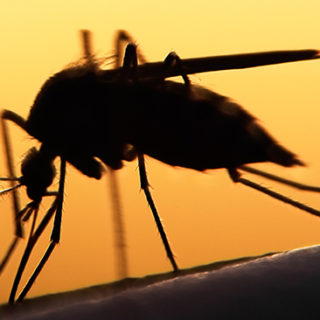Mobile phones could detect common diseases
The camera in an ordinary mobile phone could be used as a microscope for early, easy and cheap detection of common parasitical and bacterial diseases. The organisms are first identified in a portable nanotechnological detector, developed at Lund University’s Faculty of Engineering, which is then plugged in to the phone for enlargement, thanks to a technology developed in the US.
This “mobile microscope” is primarily intended for use in field work in Africa and Asia, where the nearest hospital may be very far away and there is a shortage of necessary equipment, but mobile phones are nevertheless common.
“The needs are greatest there, but there is nothing to prevent the technology eventually also being used in Swedish primary healthcare centres”, says Jonas Tegenfeldt, professor of solid state physics at the Faculty of Engineering, who has now received an additional three million SEK from the Swedish Research Council to further develop the technology.
The Lund researchers’ technology analyses the organisms’ DNA and does not require a culture, which means that healthcare staff or aid workers receive the test result rapidly without the trouble and expense of sending the sample away for analysis.
“The analysis is also more precise. This eliminates the need to use broad spectrum antibiotics, which fuel resistance and can have side-effects.”
The technology will be tested on location in Ghana and Tanzania, where diseases such as sleeping sickness and malaria are common. If everything goes well, the technology could be in place at the earliest five years from now.
Text: Kristina Lindgärde
Facts
-
Who developed the technology?
-
The microscope technology itself was developed by Professor Aydogan Ozcan at the University of Californa (UCLA) whereas the associated DNA analysis is under development in Lund. The project also includes researchers from Glasgow and Karolinska institutet in Stockholm, who have the medical expertise required for the project on bacterial and parasitical diseases, respectively. One research team at Chalmers, led by Fredrik Westerlund, contributes its expertise in the field of DNA-based detection of resistance to antibiotics in bacteria.
-
How it works
-
A blood sample is first analysed in a portable, nanotechnological detector. The blood is conducted into microscopic channels where it is decomposed. DNA from the pathogenic organisms is captured and then spread out in extremely narrow micro- and then nano-channels.
As infectious bacteria and parasites are characterised by their different size and shape, it then becomes possible to extract them and identify which genes and, by extension, which pathogenic organisms the patient is carrying. The detector is plugged into the mobile phone, whose camera enlarges the image through a technique which, in very simple terms, takes a picture of fluorescent light from dyes bound to the DNA molecules. Then the test result is sent via SMS to a central clinic for diagnosis.
-
Publication
-
“Visualizing the entire DNA from a chromosome in a single frame”, Biomicrofluidics, 9, 044114 (2015) DOI: 10.1063/1.4923262 http://www.ncbi.nlm.nih.gov/pmc/articles/PMC4570469/








